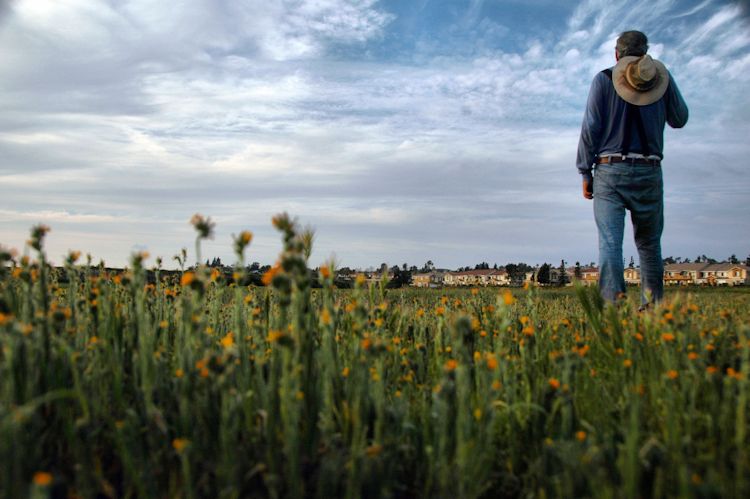Pax Nortona – A Blog by Joel Sax
From the Land of the Lost Blunderbuss
Home - Culture - Anthropology - Planet of the Peace-Loving Hippy Apes?
Planet of the Peace-Loving Hippy Apes?
Posted on March 30, 2006 in Anthropology Violence War
 Social Darwinists, Creationists, and Republicans all like to insist upon Brutish Nature. For example, they’ll tell you that bullying is unavoidable and that you do not serve the needs of the child if you prevent it. Boys will be boys and we don’t need wimps. This except from an essay by Robert Sapolsky (Foreign Affairs January/February 2006) explodes the Killer Ape myth popularized by Robert Ardrey back in the 1960s. We are so much more than our genes. It’s too bad that people turn to Spencer or the Book of Genesis to justify a violent way of life that we can change.
Social Darwinists, Creationists, and Republicans all like to insist upon Brutish Nature. For example, they’ll tell you that bullying is unavoidable and that you do not serve the needs of the child if you prevent it. Boys will be boys and we don’t need wimps. This except from an essay by Robert Sapolsky (Foreign Affairs January/February 2006) explodes the Killer Ape myth popularized by Robert Ardrey back in the 1960s. We are so much more than our genes. It’s too bad that people turn to Spencer or the Book of Genesis to justify a violent way of life that we can change.
In the early 1980s, “Forest Troop,” a group of savanna baboons I had been studying — virtually living with — for years, was going about its business in a national park in Kenya when a neighboring baboon group had a stroke of luck: its territory encompassed a tourist lodge that expanded its operations and consequently the amount of food tossed into its garbage dump. Baboons are omnivorous, and “Garbage Dump Troop” was delighted to feast on leftover drumsticks, half-eaten hamburgers, remnants of chocolate cake, and anything else that wound up there. Soon they had shifted to sleeping in the trees immediately above the pit, descending each morning just in time for the day’s dumping of garbage. (They soon got quite obese from the rich diet and lack of exercise, but that is another story.)
The development produced nearly as dramatic a shift in the social behavior of Forest Troop. Each morning, approximately half of its adult males would infiltrate Garbage Dump Troop’s territory, descending on the pit in time for the day’s dumping and battling the resident males for access to the garbage. The Forest Troop males that did this shared two traits: they were particularly combative (which was necessary to get the food away from the other baboons), and they were not very interested in socializing (the raids took place early in the morning, during the hours when the bulk of a savanna baboon’s daily communal grooming occurs).
Soon afterward, tuberculosis, a disease that moves with devastating speed and severity in nonhuman primates, broke out in Garbage Dump Troop. Over the next year, most of its members died, as did all of the males from Forest Troop who had foraged at the dump. The results were that Forest Troop was left with males who were less aggressive and more social than average and the troop now had double its previous female-to-male ratio.
The social consequences of these changes were dramatic. There remained a hierarchy among the Forest Troop males, but it was far looser than before: compared with other, more typical savanna baboon groups, high-ranking males rarely harassed subordinates and occasionally even relinquished contested resources to them. Aggression was less frequent, particularly against third parties. And rates of affiliative behaviors, such as males and females grooming each other or sitting together, soared. There were even instances, now and then, of adult males grooming each other — a behavior nearly as unprecedented as baboons sprouting wings.
This unique social milieu did not arise merely as a function of the skewed sex ratio; other primatologists have occasionally reported on troops with similar ratios but without a comparable social atmosphere. What was key was not just the predominance of females, but the type of male that remained. The demographic disaster — what evolutionary biologists term a “selective bottleneck” — had produced a savanna baboon troop quite different from what most experts would have anticipated.
But the largest surprise did not come until some years later. Female savanna baboons spend their lives in the troop into which they are born, whereas males leave their birth troop around puberty; a troop’s adult males have thus all grown up elsewhere and immigrated as adolescents. By the early 1990s, none of the original low aggression/high affiliation males of Forest Troop’s tuberculosis period was still alive; all of the group’s adult males had joined after the epidemic. Despite this, the troop’s unique social milieu persisted — as it does to this day, some 20 years after the selective bottleneck. In other words, adolescent males that enter Forest Troop after having grown up elsewhere wind up adopting the unique behavioral style of the resident males. As defined by both anthropologists and animal behaviorists, “culture” consists of local behavioral variations, occurring for nongenetic and nonecological reasons, that last beyond the time of their originators. Forest Troop’s low aggression/high affiliation society constitutes nothing less than a multigenerational benign culture.
Continuous study of the troop has yielded some insights into how its culture is transmitted to newcomers. Genetics obviously plays no role, nor apparently does self-selection: adolescent males that transfer into the troop are no different from those that transfer into other troops, displaying on arrival similarly high rates of aggression and low rates of affiliation. Nor is there evidence that new males are taught to act in benign ways by the residents. One cannot rule out the possibility that some observational learning is occurring, but it is difficult to detect given that the distinctive feature of this culture is not the performance of a unique behavior but the performance of typical behaviors at atypically extreme rates.
To date, the most interesting hint about the mechanism of transmission is the way recently transferred males are treated by Forest Troop’s resident females. In a typical savanna baboon troop, newly transferred adolescent males spend years slowly working their way into the social fabric; they are extremely low ranking — ignored by females and noted by adult males only as convenient targets for aggression. In Forest Troop, by contrast, new male transfers are inundated with female attention soon after their arrival. Resident females first present themselves sexually to new males an average of 18 days after the males arrive, and they first groom the new males an average of 20 days after they arrive (normal savanna baboons introduce such behaviors after 63 and 78 days, respectively). Furthermore, these welcoming gestures occur more frequently in Forest Troop during the early post-transfer period, and there is four times as much grooming of males by females in Forest Troop as elsewhere. From almost the moment they arrive, in other words, new males find out that in Forest Troop, things are done differently.
At present, I think the most plausible explanation is that this troop’s special culture is not passed on actively but simply emerges, facilitated by the actions of the resident members. Living in a group with half the typical number of males, and with the males being nice guys to boot, Forest Troop’s females become more relaxed and less wary. As a result, they are more willing to take a chance and reach out socially to new arrivals, even if the new guys are typical jerky adolescents at first. The new males, in turn, finding themselves treated so well, eventually relax and adopt the behaviors of the troop’s distinctive social milieu.
Like HOO-HOO-HOO Ape!

